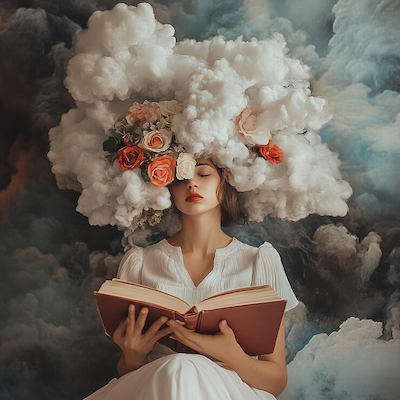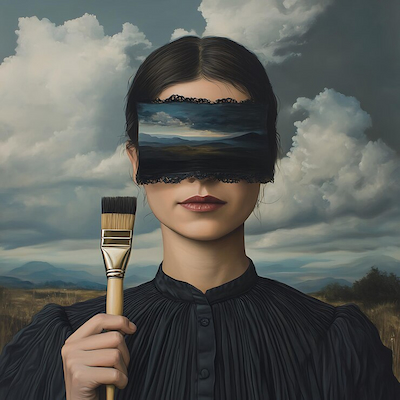
The presence of women in visual arts is a topic that has gained prominence in recent decades, though it dates back many centuries. From cave paintings to contemporary works, women have always been present—as artists, models, or muses. However, their contributions were often underestimated or ignored, reflecting a society that historically relegated women to secondary roles. This invisibility is not exclusive to the art world but mirrors a broader cultural tendency to marginalize the female voice.
Today, we are beginning to uncover the rich tapestry that makes up the history of art by recognizing the women who defied norms and left indelible marks. The struggle for gender equality in visual arts continues this effort, and acknowledging the importance of women artists is not only a matter of justice but also one of cultural enrichment. Art reflects society, and including female voices provides a more complete and authentic representation of the human experience.
How Do Female Representations Function in Art?
The representation of women in art has a long and complex trajectory, marked by stereotypes and idealizations. Traditionally, women were often depicted as objects of desire, muses, or passive figures. This reductive view limits our understanding of the female role in art and perpetuates the notion that women are merely subjects, not creators. However, throughout history, some women artists have broken these conventions and offered more authentic and multifaceted portrayals of the female experience.
Artists like Artemisia Gentileschi in the 17th century challenged the gender norms of their time by creating works that portrayed women in positions of power and resistance. Gentileschi, for instance, frequently used her own life experiences as inspiration, portraying female figures that were not only beautiful but also strong and complex. Her approach enriched artistic discourse and introduced new ways of understanding the female condition.
In the 19th and 20th centuries, the movement of women artists gained momentum as new voices and perspectives emerged. With the rise of feminism, women artists began exploring themes of identity, sexuality, and oppression in their work. Art became a medium for protest and affirmation, allowing women to express their experiences and struggles in innovative and impactful ways. This paradigm shift not only changed the representation of women but also challenged the very definition of art.
Today, female representation in art continues to evolve, reflecting contemporary issues of gender and diversity. Contemporary artists like Yayoi Kusama and Frida Kahlo explore themes of identity, mental health, and the fight against oppression, using their personal experiences as a starting point. These representations broaden the scope of art and invite viewers to reflect on their own perceptions and biases regarding femininity.

Advantages of Recognizing the Importance of Women in Visual Arts
Recognizing the importance of women in visual arts brings a range of benefits that go beyond merely giving credit. By celebrating the work of women artists, we contribute to a more inclusive and representative art world. This enriches the artistic landscape and provides a platform for new voices and perspectives, challenging dominant narratives that have historically marginalized women.
Furthermore, acknowledging women in visual arts helps deconstruct gender stereotypes that persist in society. By valuing the work of female artists, we challenge the idea that art is a male-dominated space. This shift in perception is crucial for shaping future generations of artists, who can feel empowered to explore their own voices and experiences without being confined by gender norms.
Another important aspect is the economic impact of recognizing women artists. Promoting exhibitions, collections, and art fairs that highlight women’s work contributes to the appreciation and marketability of their art. This benefits artists individually and enriches the overall art market by offering a wider range of styles and narratives that appeal to diverse audiences.
Finally, recognizing the importance of women in visual arts helps build a more accurate and inclusive historical narrative. By including female contributions, we are rewriting art history to better reflect the complexity and diversity of human experience. This reevaluation deepens our understanding of the past and helps shape a more equitable and inclusive future.
How Women Artists Have Influenced Art Throughout History
Women artists throughout history have played a crucial role in the evolution of visual arts, influencing styles, techniques, and themes. From the early days of art to contemporary movements, women have brought a unique perspective that challenged norms and expanded the boundaries of creativity. Their impact is visible across artistic movements—from the Renaissance to modern art—where their voices have become increasingly prominent.
Women have been pioneers in various artistic movements, creating works that break conventions and explore new territories. For example, surrealist artists like Leonora Carrington and Remedios Varo used art to explore the unconscious mind and the female psyche, bringing a new dimension to modern art. These women not only contributed to surrealism but also helped redefine the role of women in art.
Abstract expressionism, a movement that dominated the 20th-century art scene, was also influenced by female artists like Joan Mitchell and Lee Krasner. They brought a unique sensibility to the movement, using color and form to express personal emotions and experiences. Their presence enriched abstract expressionism and challenged the idea that abstract art was exclusively male territory.
Beyond artistic movements, women have also played a key role in forming artistic communities. Groups such as the Guerrilla Girls—composed of feminist artists—used art as a form of activism, calling out gender inequality and the underrepresentation of women in museums and galleries. These initiatives raised awareness and inspired new generations of artists to engage with social and political issues through their work.
Contemporary art is another space where women continue to leave their mark. Artists such as Cindy Sherman and Kara Walker explore themes of identity, race, and gender in their work, challenging audiences to confront biases and stereotypes. Their influence is a testament to the power of art as a tool for social and cultural transformation.

Did You Enjoy Learning About the Presence and Importance of Women in Visual Arts Throughout History?
The presence and importance of women in visual arts is a fascinating topic that deserves to be explored and celebrated. Throughout history, women have played fundamental roles—challenging norms and bringing fresh perspectives to the art world. The fight for gender equality in the arts is ongoing, and every step toward the recognition of women artists is a victory for all of us.
If you were inspired by this rich tapestry of stories and contributions, we encourage you to continue exploring and supporting female voices in art. The journey toward equality and recognition in the visual arts is still unfolding—and you can be a part of it.
Frequently Asked Questions
What is the importance of women in visual arts?
Women bring new perspectives and unique voices. Their presence enriches the arts. Without them, the art scene would be far more limited.
How has the presence of women in visual arts changed over time?
Women’s presence in visual arts has evolved greatly. They’ve gained more space and recognition. In the past, they were often ignored or overlooked.
Who are some influential female artists?
Artists like Frida Kahlo, Georgia O’Keeffe, and Yayoi Kusama changed the game. Each brought her own style and message. They opened doors for many others.
What challenges have women artists faced?
Women have faced discrimination and bias. Often, their work was undervalued. They’ve had to fight for recognition and equality in the art world.
How can you learn more about the presence and importance of women in visual arts throughout history?
You can visit museums, read books, and watch documentaries. Social media also offers great content on the subject. It’s never been easier to learn and appreciate!
Why were so many women artists overlooked in art history?
Because historical biases favored male artists, and institutions like academies and museums often excluded women. Many talented women created important works, but their contributions were ignored or attributed to men. Today, efforts are being made to recover and honor their legacies.

